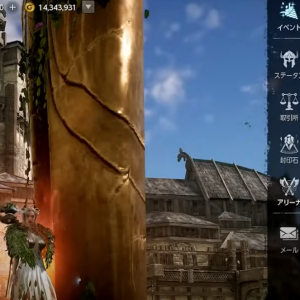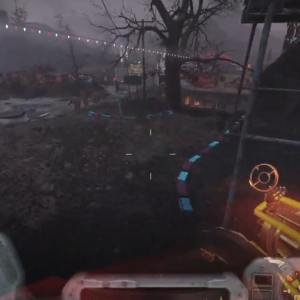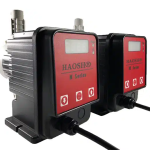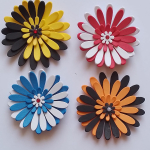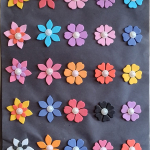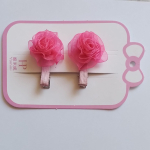In Path of Exile 2 (PoE 2), the armor mechanics have undergone significant changes, altering the way players build defenses and interact with damage mitigation. Armor has always been a key component of PoE 1, providing a way for players to reduce incoming physical damage. However, the introduction of new systems and a broader overhaul in PoE 2 has refined and rebalanced the armor mechanics to create a more dynamic experience. These changes impact how players approach tanking, damage mitigation, and overall build diversity, making armor an even more important consideration in the game's combat mechanics.
Armor’s Role in poe 2 currency sale
In PoE 1, armor provided a straightforward damage reduction system where the amount of physical damage absorbed was based on the amount of armor a character had. While effective in reducing damage, the system was often subject to diminishing returns, making it harder to rely solely on armor for total damage mitigation. In PoE 2, the armor system has been reworked to be more dynamic and balanced, with a stronger emphasis on scaling and synergy with other defensive layers, such as energy shield or evasion.
The key change in PoE 2 is that armor now works in conjunction with other forms of damage mitigation, leading to more diverse and complex build possibilities. Armor scaling is now more finely tuned, with modifiers that enhance armor's effectiveness depending on the type of damage being dealt and the specific sources of damage. This makes armor a more reliable and consistent defensive option compared to its predecessor, where players often needed to stack additional defenses to make armor truly effective.
Scaling and Efficiency of Armor
In PoE 1, armor efficiency was subject to diminishing returns, meaning that once a player reached a certain point of armor, adding more armor didn’t scale as effectively with damage reduction. While high armor values still provided significant mitigation, the returns for investing further into armor were not always proportional to the damage reduction gained.
In PoE 2, this issue has been addressed by improving the scaling of armor. The new system ensures that armor continues to offer increasing returns on damage reduction, making it a viable defensive layer throughout the game’s content, especially for tanky builds. Armor now interacts more effectively with other defensive stats, like energy shield or life, allowing players to design more resilient characters that combine various types of defense. For example, a character that focuses on both armor and energy shield can benefit from synergy between the two, reducing physical damage while also mitigating elemental and chaos damage.
Moreover, PoE 2 introduces the concept of armor penetration, which allows certain enemies or effects to bypass a portion of the armor value. This mechanic makes armor less of a catch-all solution for damage mitigation, encouraging players to balance their defenses with other layers such as evasion or elemental resistances. This change introduces more tactical decision-making, as players must now prepare for situations where their armor might be less effective, requiring them to use different strategies to stay alive.
Interaction with Damage Types
In PoE 1, armor was primarily focused on physical damage mitigation, with limited interactions with other damage types like elemental or chaos. While armor could help absorb some physical damage, it had little to no effect on elemental or chaos damage, making it essential for players to stack other defenses to handle non-physical threats.
In PoE 2, armor has been rebalanced to interact with a wider range of damage types, making it more versatile in both physical and hybrid builds. For example, players can now modify their armor to mitigate elemental damage in certain situations or invest in armor-based defenses that reduce the damage taken from specific types of elemental or chaos damage. This change makes armor a more attractive option for a wider range of builds, as players no longer need to rely solely on resistances or energy shield for defense against non-physical damage.
Additionally, armor penetration has become a more prominent feature of PoE 2, allowing certain types of enemies or environmental effects to bypass armor entirely. This forces players to adapt to different types of damage, making it necessary to incorporate multiple layers of defense to stay resilient against various threats. This approach creates more balanced gameplay, where relying on just one form of defense—such as armor—won’t be enough to survive in tougher content.
Impact on Build Diversity
The changes to armor mechanics in PoE 2 create more diverse and interesting build possibilities. Players no longer have to focus solely on stacking armor to achieve a high level of damage mitigation. Instead, they can mix armor with other defensive stats, like energy shield, to create hybrid builds that are better equipped to handle different types of damage.
For example, a character that focuses on armor could also invest in evasion to avoid incoming attacks or energy shield to absorb elemental damage. Additionally, certain items, passive tree nodes, and skill gems can now modify how armor works in synergy with other defensive mechanics. This flexibility allows for a wider range of viable builds, as players can experiment with different combinations of armor, resistances, energy shield, and other layers of defense.
The introduction of armor scaling and armor penetration mechanics also means that players must consider their overall defense strategy more carefully. While investing in armor may be a great way to reduce physical damage, they will need to supplement it with other defenses to handle high-penetration or elemental-focused enemies. This encourages a more thoughtful approach to build crafting, where players must balance various defensive layers to optimize their survivability.
How U4GM Enhances Armor Builds in PoE 2
As players explore the new armor mechanics in PoE 2, U4GM serves as a valuable resource for acquiring the necessary buy poe 2 currency, gear, and crafting materials to maximize armor’s effectiveness. Whether players need specific items that enhance armor or wish to purchase or craft gear with high armor values, U4GM provides a reliable source of in-game currency to ensure that players can equip their characters with the best possible armor.
U4GM also allows players to optimize their builds by providing access to items and modifiers that can increase armor scaling or provide additional defensive layers. For example, players looking to build around armor and energy shield synergies can find the right gear that enhances both stats, ensuring their defenses remain strong across multiple damage types. By using U4GM’s services, players can craft or acquire items that complement their armor-based builds, maximizing their defensive capabilities and improving their overall survivability in PoE 2’s tougher content.
The changes to armor mechanics in PoE 2 introduce a more dynamic and balanced approach to damage mitigation. By improving armor scaling, enhancing its interaction with other defenses, and introducing armor penetration mechanics, the game creates a more complex and strategic system for defensive gameplay. Players can now build around armor in more diverse ways, combining it with energy shield, resistances, and evasion to create resilient characters. With the help of U4GM, players can optimize their armor-based builds by acquiring the right items, crafting materials, and poe 2 currency, ensuring they are prepared for the challenges ahead in the game’s evolving content.
Recommended News: PoE 2 Trigger Skills Gems - Path of Exile 2



